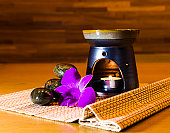Poker Bluffing Techniques
페이지 정보

본문
Poker Bluffing Techniques
What is the purpose of bluffing in poker?
The function of bluffing in poker is to deceive opponents into making poor choices by creating the illusion of a stronger hand than one actually holds. This psychological tactic can lead opponents to fold superior arms or call with weaker ones, thus allowing the bluffer to gain a bonus within the game.
Key Bluffing Techniques
Successful bluffing requires strategic execution. Here are some important techniques:
Know Your Opponents
Understanding your opponents’ tendencies is essential. A participant who regularly folds to aggression may be extra vulnerable to bluffs in comparability with a calling station who not often lays down hands.
Choose the Right Moment
Timing is everything in poker. Bluffing must be best when:
- The board is favorable: If the neighborhood playing cards present a plausible robust hand.
- Your desk picture supports it: If you’ve performed tight and suddenly shift to a extra aggressive type.
Bet Sizing
Proper bet sizing can improve the effectiveness of a bluff. A larger bet can intimidate opponents, whereas a smaller bet may invite them to call, making it essential to search out the best steadiness.
Maintain Consistency
To preserve credibility, hold your actions constant. If you have been betting aggressively on earlier arms, sudden passivity may raise suspicion, whereas constant aggression reinforces the bluff.
In summary, bluffing is a crucial side of poker that, when executed skillfully, can significantly tilt the percentages in your favor. Understanding the dynamics of the sport and the gamers concerned will improve your capacity to bluff effectively.
Is bluffing a skill?
Bluffing in poker is undeniably a talent that may considerably influence the outcome of a game. It's not simply about mendacity; it's about understanding the game's dynamics and studying opponents.
Understanding the Psychology
Successful bluffing requires a deep grasp of psychological tactics. A expert player should gauge the emotional states and behaviors of their opponents. Recognizing when an opponent is more doubtless to fold, based on their reactions and betting patterns, is essential.
Timing and Context
Bluffing is also about timing. Knowing the proper second to execute a bluff can turn the tides of a sport. A well-timed bluff can exploit opponents’ weaknesses whereas capitalizing on the context of the game, similar to the dimensions of the pot or the stage of the match.
Consistency and Credibility
For a bluff to be efficient, players must be able to preserve credibility. This means varying their playstyle and occasionally exhibiting robust arms. If a player is too predictable, opponents will catch on and call bluffs more regularly.
Reading Opponents
Observational skills are important in bluffing. Players must analyze their opponents carefully to determine tells that might indicate power or weak point. A keen awareness of physique language and betting conduct could make the difference between a successful bluff and davao an expensive mistake.
In abstract, while bluffing would possibly look like a simple act of deception, it is a multifaceted talent that combines psychology, timing, credibility, and observational acumen. Mastery of those parts can lead to increased success at the poker desk.
What is the bluff method?
The bluff methodology in poker refers to a strategic play the place a participant bets or raises with a weak hand, making an attempt to convince their opponents that they have a stronger hand. The aim is to induce opponents to fold their higher palms, permitting the bluffer to win the pot without having to indicate the most effective playing cards.
Successful bluffing relies on several factors, together with:
- Table picture: A player’s perceived type can affect how opponents reply to their bets. If a participant has been enjoying aggressively, their bluffs could also be more credible.
- Game dynamics: Understanding the tendencies of opponents, similar to their probability to fold or call, is crucial in determining when to bluff.
- Bet sizing: The amount wagered can influence the effectiveness of the bluff. A larger wager may create the phantasm of strength, whereas a smaller wager might invite calls.
- Board texture: A coordinated board can create the potential for sturdy hands, making it more likely for opponents to fold weaker arms if the bluff is executed successfully.
Ultimately, the bluff methodology is an art that mixes psychology, strategy, and the ability to read the game, making it a key element of successful poker play.

- 이전글CBD Plus – Calming Gummies – 4000mg 24.12.07
- 다음글CBD Bath Bombs 24.12.07
댓글목록
등록된 댓글이 없습니다.
